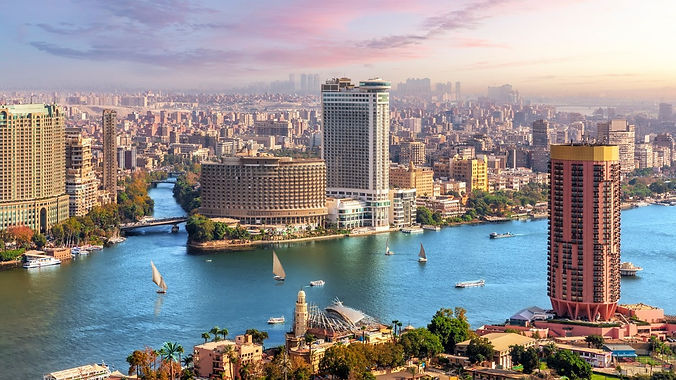
CAIRO

Modern Cairo
The profound influence of religion, the Nile River, and trade is unmistakably evident in the formation of this ancient city's character. The abundance of fresh water and the construction of the Suez Canal, coupled with the arrival of colonial powers, have significantly altered the city's landscape. The widespread emulation of European culture gave rise to the development of European-style satellite cities. However, the mismanagement of economic resources by those in power has led to the city's deterioration and weakened its vitality. Once renowned for its fertile land and thriving industries, the city now struggles under the burden of political conflicts, emigration, informal settlements and various other challenges. Nevertheless, without these hindrances, it could have emerged as the preeminent city in the world.
Cairo's Urban Renaissance: Pioneering Sustainable Development in the Modern Era
Urban Dilemma: Heritage vs. Livability
Cairo, akin to many other major cities, grapples with pressing environmental concerns and the consequences of rapid urban expansion, resulting in a significant loss of vegetation cover. Despite governmental endeavors post-2011 aimed at revitalizing downtown Cairo, informal activities persist, contributing to an increasingly disorderly urban landscape. Severe congestion, exacerbated by issues like street vending and trespassing, poses significant challenges to the city's overall livability. Inadequate urban and traffic planning, coupled with ineffective management, further compound these difficulties. While Cairo's historical sites enjoy global renown, preserving them amid ongoing urban development remains an arduous task. The city's status as a historical and cultural hub faces considerable threats from congestion and pollution, underscoring the urgent need for comprehensive measures to enhance its livability and safeguard its heritage. Presently, Cairo finds itself at a critical juncture, as it has long served as a safety valve for Egypt's burgeoning population growth
Finding Balance
In striving to mirror the success of Dubai, the contemporary visions for Cairo's modernization tend to overlook several critical facets. These oversights include neglecting the preservation of the city's existing urban fabric, failing to acknowledge the intricate layers of its cultural complexity, overlooking the imperative of safeguarding its ecological settings, and disregarding the essential needs and aspirations of its residents. While the pursuit of modernization is admirable, it must be balanced with a nuanced understanding and consideration of Cairo's unique identity, historical legacy, and the well-being of its residents.